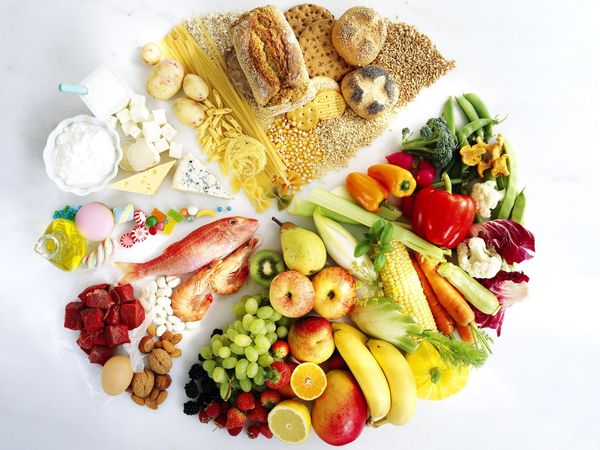Stock up on these RD-approved staples.
Nutritionist-approved pantry staples
What you keep in your pantry is essential to helping you eat right, lose weight, and improve your health. That’s because a well-stocked pantry means making meals is a cinch, and the more home-cooked meals you eat, the greater control you have over how much saturated fat, added sugar, and sodium you take in.
I know this first-hand: I’ve made a point of eating primarily homemade meals for years. (You can find some of my recipes on my blog Appetite for Health). I only eat out when I’m traveling for work or attending a special event or party.
So how do I do it? Here are nine everyday essentials I keep in my pantry so I can make delicious and nutritious meals at a moment’s notice.
Pulses
Pulses include dry beans, peas, chickpeas, and lentils. Protein-rich and low in calories, pulses are nutritional powerhouses. Research indicates that they may help you lose weight—and keep it off. I use them in soups, salads, and to make creamy dips.
Whole grains
Whole grains can help you make healthy meals in minutes, and, thanks to their fiber, they’ll help keep you satisfied. Plus, eating more whole grains can help you reduce your risk for heart disease and certain cancers. I keep a wide variety of whole grains in my pantry to help ensure we eat right when time is tight, including brown rice, whole-wheat pasta, oats, quinoa, barley, and bulgur.
Canned tomatoes
Armed with cans of whole, diced, and crushed tomatoes and even pureed tomato sauce, you can create an endless variety of sauces and soups. Compared to fresh, canned tomato products are particularly healthful; the processing makes lycopene, a carotenoid that provides anti-cancer and heart-health benefits, easier for your body to absorb.
Nuts and nut butters
Keeping a variety of nuts and nut butters on hand can amp up the texture and flavor of dishes at a moment’s notice. Rich in heart-healthy fats, protein, fiber, and antioxidants, nuts can help reduce risk for chronic diseases and may help you whittle your waistline: Studies show that people who eat a handful of nuts everyday are leaner that those who don’t.
Dried herbs and spices
Rev up flavor without adding calories, sugar, or fat to your food! Herbs and spices are also bursting with protective antioxidants. In fact, one study examining more than 3,000 foods concluded that several herbs and spices, including oregano, cinnamon, thyme, and rosemary, had some of the highest antioxidant counts of all.
Healthy oils
The main oils I use are extra-virgin olive oil for salad dressings and dipping; canola oil for cooking and baking because of its light, neutral flavor; and sesame oil for Asian-inspired stir-fry, dressing, or sauce. These oils are all considered heart-healthy because they are lower in saturated fat than butter, lard, or coconut oil.
Broth and stock
Keep low-sodium vegetable, beef, and chicken stock or broth on hand so you can easily put together soups, sauces, and stews. They’re also great to help moisten leftover meat or poultry that’s dry or overcooked. You’ll add moisture, flavor, and richness fast, while keeping calories in check.
Natural sweeteners
When you need a touch of sweetness in a recipe, look for one that has beneficial antioxidants like honey or molasses or date or prune puree. For cooking and baking, I opt for a natural stevia and sugar blend instead of pure cane sugar, since the blend has 75% fewer calories than table sugar. Keep in mind even natural sweeteners still count as added sugar!
Condiments
No pantry is complete without condiments that help ensure your meals will be flavorful. Some of my favorite healthy condiments include vinegar (red wine, balsamic, and apple cider), mustard (yellow, Dijon, and spicy brown), amino acids and soy sauce (opt for low-sodium versions), hot sauce, and Worcestershire sauce.
Written by Julie Upton, RD, this story originally appeared on health.com






Leave A Comment
You must be logged in to post a comment.